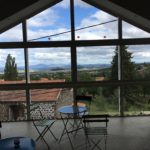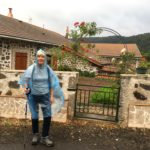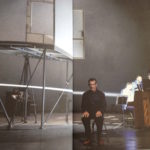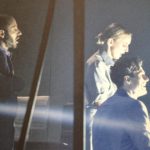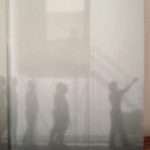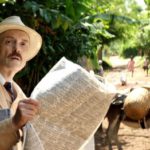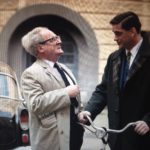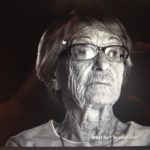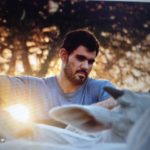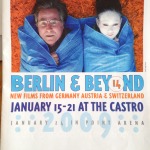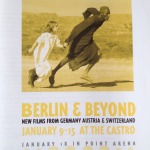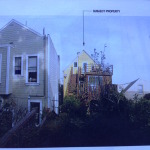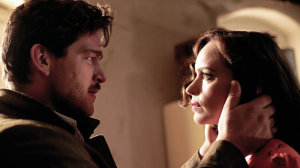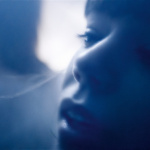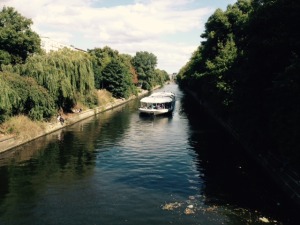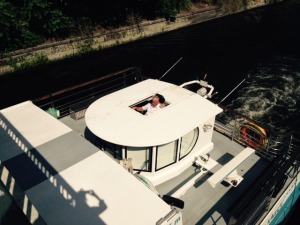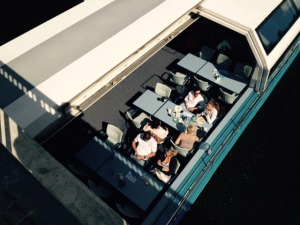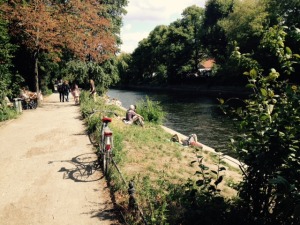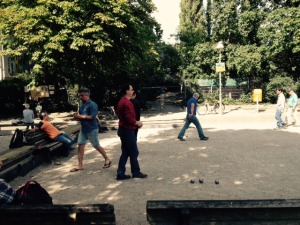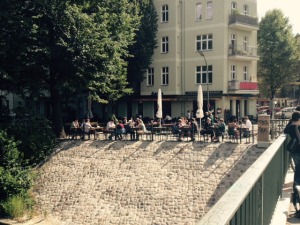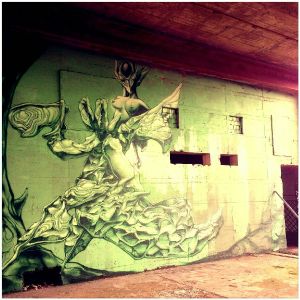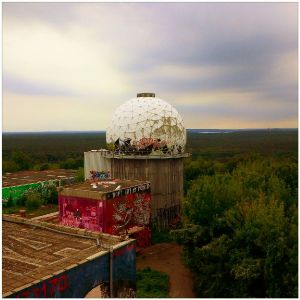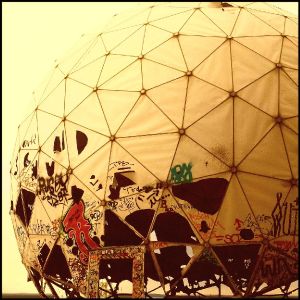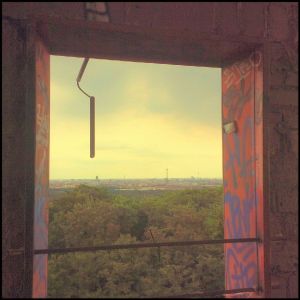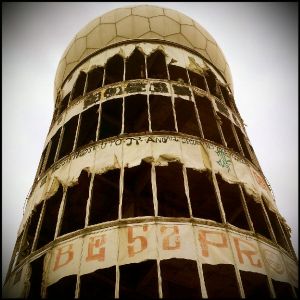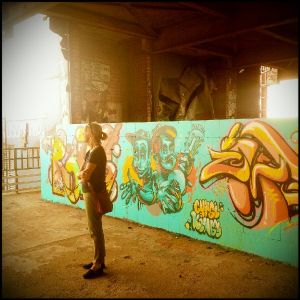One week or 120 km on the Via Podensis in France was a short introduction to the Camino of more than 1500 km that ends in Santiago de Compostela in Spain. I flew to Lyon’s super modern, sleepy airport with impressive TGV station (1st photo), from there by local trains and bus to Le Puy-en-Velay, a small town far away from everything. Hiking the Chemin is “en mode” which has vitalized rural regions and brought additional income to farmers that had no part in the tourist boom. The first night in a youth hostel like room with bunk beds and a snoring neighbor was forgotten when we sat down for an unusual breakfast with yoghurt, cereal, cheese and cold cuts – enough to pack a lunch. From then on it was baguette, butter and jam for petit déjeuner. Off we went with our day pack full of goodies into a grey cold morning and followed the hikers/randonneurs who seemed to know the way of Gr 65 marked by red and white signs. Soon the hikers disappeared and we were on our own, walking over gentle hills full of happily grazing cattle and sheep, through forests and small villages with noone in sight to ask for the way when we couldn’t find the markers. But by late afternoon we would always find our next auberge or gîte to where our luggage had been transported – we had opted for the easy way to hike. A stunning first dining room with view (see photo) was a big surprise – we had expected a simple hostel. Lentils (the specialty of the auvergne) with sausage made of the happy cattle, most delicious cheeses served with red wine, of course, and tarte aux pommes, set the standard for the next 6 days that could only be surpassed by boeuf and veau raised at the farms where we stayed a few times. It’s good to know French if you do the camino in France – neither hosts nor the randonneurs at the dinner table spoke English and the French love to talk over dinner. Plenty of opportunities for me to refresh my French but I couldn’t follow the fast talking hostess when she explained that the green bean salad was just for the vegan couple sitting next to me. I thought it was for all of us and ate it with gusto. A faux pas, but I enjoyed the salad! Then came a rainy, windy day and my flimsy bicycle poncho from Berlin (see photo) didn’t really do the job. Soaked and cold I made it to the next village and swore to buy good rain gear – but there was no store, just a church and a few farm houses built around 1650 and no people in the streets, no children, just dogs watching us. Most of them were a mix of border collies, smart, loyal (see photo with farmer Martin) herding sheep, cows, cats – beautiful dogs. I would have taken the black one (photo) with me but he decided to follow a randonneur dog. Yes, some people took their dogs on the long hike, some pushed shopping carts over the hills or tested the ground with magic sticks to find the best resting place. A colorful mix of hikers sets out with us for Santiago de Compostela and most of them seem to reach their goal even if it takes years. A seventy year old woman from England joined us along the way. She had promised her mother on her deathbed to do the hike in one piece – three more months to go. There are great WCs along the chemin, toilettes sèches, so much better than anything I have used on hiking trails in California. You have to pump the pedal 5 times to clean the plate and it really works – not even bad odors. From Saint-Alban where poet Paul Eluard spent the winter of 1943-44 in the resistance finally to our destination Aumont-Aubrac. We had booked an airbnb for the last night and had to wait for our hostess in the cold rain outside of her house. A gîte with cows and dogs and randonneurs with whom to share the last supper would have been better.
- Comments about Films & other topics related to things German and beyond will be posted here in English or German by Ingrid Eggers. Check back often!
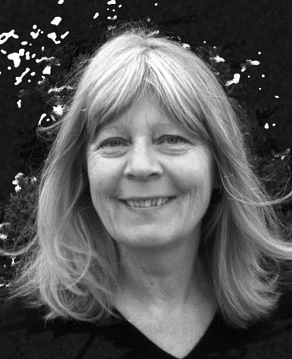
-
Recent Posts
- Chicken Stories- Update
- Painting is Fun / Malen macht Spass
- 27th BERLIN & BEYOND March 2023
- MIDLIFE CRISIS: Corsage & Tár
- 26th Berlin & Beyond (March 11-16, 2022)
- WHAT DID YOU DO DURING COVID, OMA? (includes more on the Chickens)
- A Sad Update to the Chicken Stories
- Part 1 – WHY WE LAY NO EGGS NOMORE
- A Day in the Times of Corona
- EFFIGY – Poison and the City
- HOW TO BUILD YOUR DREAM HOUSE on a Small Lot in a Historic District of San Francisco.
- Peter Handke & Deutschstunde
- At the 39th SF JEWISH FILM FESTIVAL
- THE AUSTRIAN TOUCH at Frameline 43
- The Wealth Train Is Steamrolling My Neighborhood
- BERLIN & BEYOND March 2019
- SEPTEMBER 2018
- DIE STADT OHNE JUDEN at the SFJFF
- 61st SF International Fim Festival
- AND THE OSCAR GOES TO…
Archives
- June 2023
- March 2023
- February 2023
- March 2022
- May 2021
- February 2021
- October 2020
- April 2020
- January 2020
- November 2019
- October 2019
- July 2019
- June 2019
- March 2019
- October 2018
- July 2018
- April 2018
- February 2018
- January 2018
- October 2017
- September 2017
- July 2017
- May 2017
- March 2017
- February 2017
- October 2016
- July 2016
- May 2016
- January 2016
- December 2015
- September 2015
- July 2015
- May 2015
- February 2015
- November 2014
- October 2014
- September 2014
- August 2014
- July 2014
- June 2014
- May 2014
- March 2014
- February 2014
- January 2014
- October 2013
- September 2013
- August 2013
- June 2013
- May 2013
- April 2013
- March 2013
- February 2013
- December 2012
- November 2012
- October 2012
- September 2012
- August 2012
- July 2012
- June 2012
- May 2012
- April 2012
- March 2012
- February 2012
- December 2010
Meta





